Another day, another effing brilliant SteynMusic outing.
This weekend marks the centenary of George David Weiss, born April 9th 1921. Who was George David Weiss? Well, he’s no household name, but, to reprise my old line on obscure songwriters, you’d be hard put to find a household that doesn’t know at least one George David Weiss song.
So who was George David Weiss? Well, even George Shearing, who wrote his one and only enduring song with Weiss, had no more to say about him in his autobiography than that he was “a man by the name of George David Weiss”. The man by the name of was born under that name in April 1921 and was all set to become a lawyer or accountant when he decided to follow his heart and go to Juilliard, where he learned composing and arranging. The latter got him employment with Stan Kenton and other bands, until he met his first songwriting partner, the talented West Indian composer Bennie Benjamin. A young Sinatra picked up their “Oh, What It Seemed to Be”, and a few years later Kay Starr had a monster hit with “Wheel of Fortune”…
Starr’s chartbuster is of course a true gem, one which I’ve thoroughly enjoyed performing onstage myself who even knows how many times. Robert Gordon did a mighty fine version as well.
Weiss had one hell of a capacious catalog, and as Steyn somewhat bemusedly notes, had everybody from Sinatra to Nat Cole to Peggy Lee to Elvis to…ummm…Whitesnake(?!?) cover his stuff over the years. That’s a variety so stylistically broad that it says a lot about the enduring appeal of the man’s work all by itself. I’ll embed another of my personal all-time Weiss faves before we all move on to what I consider the really fun part of the story.
The Tokens, in an ironic twist quite commonly found in the music biz, not only had no faith in the song but actually despised the thing, even going so far as to plead with the producers and their label not to release the very song that would end up being their one and only bona fide smash. Not the first time such lightning-strikes weirdness has occurred in the biz, and you can be sure it won’t be the last.
Now we come to the part I was most amused by, a chapter of the Weiss story all a-brim with music biz irony of its own unique flavor. This will require some heavy excerpting, but I assure one and all that the payoff is well worth the arduous wade to get there.
It started with Bob Thiele, who was a successful record producer but only a very occasional songwriter. So, for a composing partner, he turned, as so many others have done, to George David Weiss. In theory the latter could have written any or all of “What a Wonderful World”, but Thiele told me that Weiss stayed mostly down the musical end.
Which I find hard to believe, because the tune is mostly “Twinkle, twinkle, little star” and, after decades in the music biz, Weiss was way beyond that.
On the other hand, Weiss told Graham Nash (of the Hollies and Crosby, Stills, Nash and Young) that he wrote it with Louis Armstrong in mind – which suggests he also had a hand in the lyric.
Why Satchmo? Well, it was a ballad of hope and optimism that transcended the times. But for that very reason it also required a singer who transcended the times.
A singer like, say, Louis Armstrong…
And, if you think that seems kind of obvious now, it certainly wasn’t in 1967. If you pick up almost any jazz critic’s biography of Satchmo, they generally follow the same basic arc: Terrific trumpeter, innovative musician – and then he sold out and did commercial pap for suburban hi-fi filler. I don’t subscribe to that crude reductio myself, but it is true that, after he’d booted the Beatles off the top and taken “Hello, Dolly!” to Number One, the calculus changed somewhat for Armstrong’s management: There’s a new Broadway show opening? Take the big song and do another “Dolly” knock-off. Hence Satchmo’s “Mame” and Satchmo’s “Cabaret”, and doubtless, had he lived, Satchmo’s “Jesus Christ Superstar” and Satchmo’s “Phantom of the Opera”.
Nevertheless, the writers met with Louis to pitch the song. As Bob Thiele recalled, “We wanted this immortal musician and performer to say, as only he could, the world really is great: full of the love and sharing people make possible for themselves and each other every day.”
Instead, Satch peered at the sheet – unlike many singers, he was a musician who could read the music – and, when his eye got to the bottom of the page, he looked up and said:
What is this sh*t?
He was studying the music – no words, just a contemporary ballad tune that called not for Armstrong’s tight jazzy All-Stars but for a string section willing to play “Twinkle, Twinkle, Little Star”. I wouldn’t myself say the tune was exactly “sh*t”…But, as I said, Armstrong hadn’t seen the lyrics. And, when they passed him the words, he fell in love. Not so much because of the green trees, red roses, blue skies, white clouds, but because of the final eight bars, which ditch the “colors of the rainbow” theme:
I hear babies cry, I watch them grow
They’ll learn much more than I’ll never know
And I think to myself
What A Wonderful World…That quatrain reminded him of 107th Street in Queens, the tree-lined block he and his wife Lucille had lived on for a quarter-century (and whose modest red-brick home now houses the Louis Armstrong Museum):
There’s so much in ‘Wonderful World’ that brings me back to my neighborhood where I live in Corona, New York. Lucille and I, ever since we’re married, we’ve been right there in that block. And everybody keeps their little homes up like we do and it’s just like one big family. I saw three generations come up on that block. And they’re all with their children, grandchildren, they come back to see Uncle Satchmo and Aunt Lucille …and I got pictures of them when they was five, six and seven years old. So when they hand me this ‘Wonderful World,’ I didn’t look no further, that was it.
He was genuinely touched by the heartfelt optimistic simplicity of the sentiment, and its faith in the future – that a new generation would know things that he would never live to see. Like, er, Twitter. Well, let’s not get hung up on the details. He was struck by the song’s message, and so agreed to sing it.
An arrangement was made, musicians were booked, and a studio was procured – for a midnight session in Vegas, after Satch had finished up his set at the Tropicana. There was just one problem. Louis Armstrong had recently switched record labels, to ABC, and the president of the company, Larry Newton, was opposed to Satchmo doing “What a Wonderful World”. I don’t mean he was antipathetic or indifferent to it, or felt it was not a strong choice for a single but would be okay for Side 2 Track 5 of an album. I don’t even mean that he disliked it. He loathed “What a Wonderful World” with a passion: He thought he’d signed the Number One bestselling pop star of “Hello, Dolly!”, and he didn’t want his new act doing what he regarded as the polar opposite of “Dolly” – a soporific inert crawl-tempo ballad.
He’s not necessarily mistaken about that, as my kid’s class certainly demonstrated. So I’m not unsympathetic to Larry Newton’s concerns. The trouble was that on August 16th 1967 he’d flown in to Vegas for a photo shoot with his new star and that evening he showed up at United Studios determined to prevent the recording. He went so totally bananas that Ed Thiele, as producer, and Artie Butler, the arranger, and George Weiss and Frank Military, who were also present, hustled him through the door and locked him out of the studio. Which isn’t exactly conducive to Louis Armstrong recording a tender and sensitive ballad unlike anything he’d sung before…
It was a long session – either because of Newton’s antics or because they were interrupted by the toots of passing Union Pacific freight trains, or because the material was a little outside Pops’ comfort zone. They stayed there till 6am, and then they all went for breakfast. And the label only agreed to pay the orchestra for their extended shift on condition that Satchmo himself accept a mere $250 for the session. But it was worth it: Louis worked and worked on his interpretation until he and the writers were satisfied. I confess as a young child I always heard “the dark sacred night” as “the dark say goodnight”, but once I’d grasped Satch’s enunciation I appreciated what a fine pairing that makes with “the bright blessed day”: it adds a subtle touch of the holy and transcendental to the song; that the world is not merely “wonderful” in the way that a great cheeseburger and a vanilla shake can be, but truly wonderful because it’s the wonder of God’s creation. But, as I said, it’s discreetly done. And Armstrong’s reading of the middle-eight, in that unmistakeable beautiful gravelly rasp, is as sincere and true as anything he ever sang:
The colors of the rainbow, so pretty in the sky
Are also on the faces of people going by
I see friends shaking hands, saying ‘How do you do?’
They’re really saying, ‘I love you…’Is that really what they’re saying? Well, Pops bought into it. In the studio that night, representing all those children who’d grow to learn more than he’d ever know, was George Weiss’ kid Peggy. “So you’re George’s daughter? Pleased to meet you!” And he shook her hand, and maybe, for a small, shrunken old man not in the best of health, it really did mean “I love you.”
And, for those wondering what the hell all this hippie-dippie peace’n’love stuff had to do with Louis Armstrong, he waited to the very end to tie it back to his entire oeuvre in what, with hindsight, was the only possible wrap-up:
Ohhhhhh, yeahhhhhh.
Larry Newton wanted another “Hello, Dolly!” Well, he got the last two words.
But he wasn’t happy, and he swore to exact his revenge – by doubling down on the petty and stupid. In order to prove he was right about the song, he released the single in late 1967, but refused to promote it. He didn’t ship it to radio stations, so no disc-jockeys played it, and nobody bought it. In those days, ABC’s UK distribution was licensed to EMI, and, in the fullness of time, “What a Wonderful World” showed up at the London office, and they released it as a normal single. Actually, not that normal, because it was, I believe, the very last single EMI released on their HMV label. But, other than that, they did all the things you’re meant to do with a new release: They sent review copies to the BBC and to trade magazines, and discovered what Larry Newton, once he’d gotten over being locked out of the studio, should have realized – that people really liked it. It entered the UK charts at the beginning of February 1968 at Number 45, cracked the Top Forty in its second week, the Top Thirty in its fourth, and then climbed through March and April up to Number One.
So, just for the record, where did it get to on the Billboard Hot 100?Er, big hit sound Number 116.
In fact, Larry Newton’s singular talent for sabotage was so effective that he wound up with a record that was a hit everywhere except his own territory: Top Thirty in Australia, Top Twenty in New Zealand and the Netherlands, Number Seven in Switzerland, Number Six in Belgium and Germany and Norway, Number Two in Ireland, Number One in Austria… What a wonderful world (America excepted). In London, EMI decided the song was so big they needed an album built around it. At which point Larry Newton decided to triple-down on the moronic. He agreed to the LP, but only if Armstrong did it for $500. Joe Glaser, Louis’ manager, wasn’t in the mood for that, and instructed Bob Thiele:
You tell that fat bastard to go f**k himself and give us $25,000 for eight more sides.
Larry Newton responded:
Tell him to go f**k himself, and why do we give a sh*t about these European companies? Screw ’em all.
They’re really saying “I love you”.
Three years later, Louis Armstrong was dead. If you’d been listening to the radio in Britain, Europe, around the planet in 1971, they marked his passing with “What a Wonderful World”. On American stations, they played everything but.
It took two decades and Good Morning, Vietnam for a great record finally to achieve the recognition on its home turf it had known for a generation everywhere else. It doesn’t matter that Satch was born in 1901; he sounds old and elegaic on the record, and that’s the point: he’s a fellow approaching the end of his life, but he’s not bitter or even bittersweet; he’s not looking back but looking forward to when those babies will grow. It’s an old man, but it’s a young song. That’s why it’s a popular father/daughter dance at weddings: It’s the past blessing the future.
And that’s also true of any great songwriter’s catalogue – which is why we salute George David Weiss on his centennial.
As for Larry Newton, well, I wasn’t sure whether he was still with us or not, so I looked him up, and read:
Newton is probably best remembered today for trying to stop Louis Armstrong from recording ‘What A Wonderful World’.
Ohhhhhh, yeahhhhhh!
Beautiful song, beautiful story, no? Tales like this provide a small window onto why it is that people get into the music business in the first place, and why a not-negligible percentage of them are perfectly willing to break themselves—financially, spiritually, morally, even physically—to stay in, on any level they can contrive. I swear, out of all the great music posts Steyn has done, and he’s done quite a few, this one may well be the beat of ’em all.
About a guy most of us have probably never even heard of.




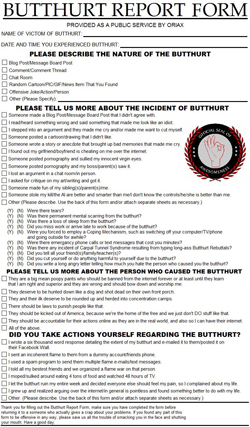

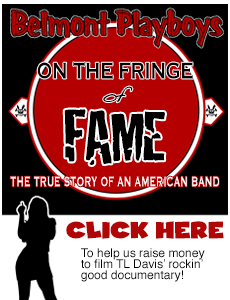


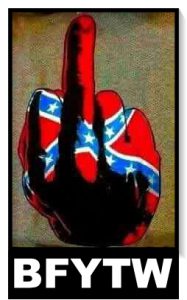
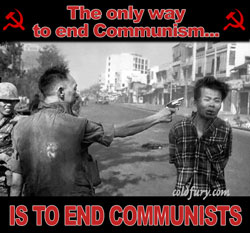




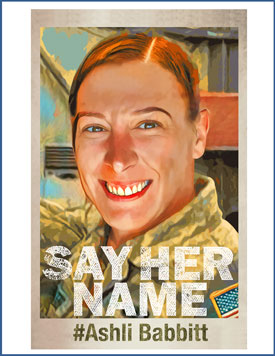
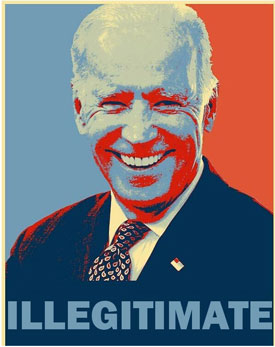
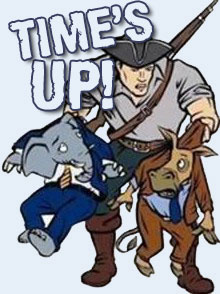

 - Entries
- Entries
There is a great podcast episode about the history of Twinkle Twinkle and how George David Weiss used it for “What a Wonderful World”. . . you’ll love it. https://tracingthepath.libsyn.com/abcs-of-the-most-famous-song-in-the-world
In 50 years how many songwriters will have been forgotten from the 60’s and 70’s that are interesting and deserving? I hazard that except for a baker’s dozen of the really famous ones like Dylan, Lennon, McCartney, Jagger, Richards etc most people under 35 would be hard pressed to name more than 15.
So is it hard to imagine that people whose prime writing years ended 70 years ago are almost all forgotten except a dozen or so of the more prolific and high profile ones?
Especially since Cancel Culture is looking to wipe out any of the White ones left except perhaps if they are female.
Will Under My Thumb Jagger/Richards remain unscathed for very long on that basis?